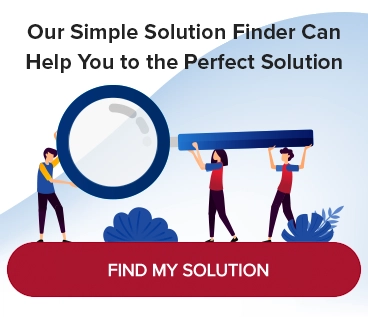What Savvy Business Leaders Need to Know: Cloud Computing Demystified
What’s the difference between Single-Tenant and Multi-Tenant?
Single-Tenant model – A single instance of software, supporting infrastructure, and dedicated database serving a single customer. This model typically has a higher total cost of ownership than similar multitenant models and a greater capacity for customization (and related costs), but security risk can be somewhat lower as there are fewer potential points of entry.
Multi-Tenant model – A single instance of the software and its supporting infrastructure serving multiple customers. In this model, each customer shares the same software application, however, each customer’s data is isolated and kept invisible to other tenants. The software vendor takes on infrastructure management and software maintenance responsibilities so scaling up is easier. Initial setup is easier. The total cost of ownership for multi-tenant software is typically lower. Customizations are implemented as configurations, for which there are typically extensive options, so the underlying code remains the same, making upgrades easier.
As new technologies proliferated, new variations on models for software deployment became possible. One of these models is the hybrid cloud.
Hybrid Cloud
The hybrid cloud refers to a mixed environment of computing, storage, and services made up of on-premises infrastructure and data storage, private cloud services, and may include a public cloud—such as Amazon Web Services (AWS) or Microsoft Azure—with orchestration among the various platforms. Hybrid means you’ve used a combination of these approaches.
A hybrid cloud delivers customers agility – to manage workloads, scale quickly, offer new services, or other responses to the need to adapt and change direction quickly – important in a highly dynamic market. A little more complexity is involved, but competent consulting partners abound to help manage this. Cloud services can deliver cost savings, however, their main value lies in supporting a fast-moving digital business transformation – new ways of solving problems using automation and digital technology to deliver innovation, new customer interaction models, and deeper insights into the business.
Is that different than a managed service?
Yes. And no. When a company purchases software under the managed service model, they are typically relying on their service provider to remotely manage their IT infrastructure and/or software applications on a proactive basis and usually under a subscription. This is a single-tenant model, rather than the multi-tenant model represented by SaaS applications, and the service provider may take advantage of a public cloud (the aforementioned AWS or Microsoft Azure) to host the application and provide infrastructure services.
A managed service is more “purely” cloud than many hybrid models, but not as much as a SaaS offering. The advantage of this model is that because the software has a single tenant, the software instance can be customized at a deeper level and there is greater version control than with multi-tenant software. Some customers require this, but for most customers, it’s not needed. The trade-off for this greater level of control is the greater responsibility to keep the software up to date, manage patches, etc.
So what’s cloud-connected?
Cloud-connected is a form of hybrid cloud but is specific to one application. In addition, it typically offers a set of rich API’s and pre-configured “connectors” to map data and business processes so that one application can take advantage of the value-added capabilities of a 3rd party application, such as industryspecific ISV applications.
A popular implementation of a cloud-connected application is one that runs in the cloud, but the customer’s data is stored locally, with one or more industry-specific ISV applications adding capabilities that the main application does not. Many customers who would prefer not to store their data in the cloud like the benefits that this option provides. One advantage is that updates, version control, capacity management, and other supporting infrastructure considerations are managed by the software vendor, leaving the customer with fewer technology management responsibilities, freeing up capacity to focus on business processes and the other differentiators for the business.
Another “less cloudy” option is for both the software and data to reside on-premises with the customer but still take advantage of the ISV solutions available in the cloud. Many existing customers prefer this method when they have already made an investment in on-premises software but want to extend the capability of that investment. This option is one that may serve best those customers who don’t have particularly dynamic business requirements but rather have more established business processes.
Show me the money. Why subscription vs perpetual license? And what does this have to do with the cloud?
For many years, software publishers offered software licenses in perpetuity, and their ongoing revenue stream was largely supplied by maintenance and support. With the advent of Software-as-a-Service models, a new financial model was possible as well. These SaaS offerings were packaged as an annual subscription fee to better reflect the actual consumption of the software. The deployment model was “as a service,” or a true cloud application wherein the software, data and supporting infrastructure all were operated and maintained by the software vendor.
As technology advanced, software vendors were able to offer a deployment model (cloud, on-premises, some combination), which did not have to be quite so tightly coupled to the financial model, as long as some type of consumption value could be incorporated. For example, NetApp, the data management provider, offers an option which marries a NetApp on-premises infrastructure (hardware and software) with a usage-based consumption model that gives customers the financial flexibility of an operating expense purchase.
The advantage of the subscription financial model is that pricing typically correlates quite well with the rate of consumption, so customers can start small and grow as they need. In addition, a subscription model is budgeted and accounted for differently. Subscriptions are considered operating expenses while up front license fees must be accounted for as capital expenditures. Capital expense is often a more difficult expenditure to justify than an operational expenditure. Therefore, the subscription model can give the customer an option that is easier for departmental-level decision makers to adopt and delivers a more attractive balance sheet.
Today, most modern software publishers offer their software under the subscription model and give customers flexibility around their deployment model.
What’s best for me?
Not everything belongs in a public cloud and not everyone is comfortable with their data being stored there, which is why so many forward-thinking companies choose a hybrid mixture of cloud services. This offers the benefits of both public and private clouds. It allows applications and components to interoperate across boundaries (for example, cloud versus on-premises). The same level of flexibility can be provided for data. In the quickly changing digital environment, companies should select a solution that allows them to rapidly respond to their dynamic needs.
Sage can support your cloud vision
While a sprint to the cloud is plausible and potentially greatly rewarding, not every company is equipped to attempt such a mad dash. Sage is a solution provider with the big-picture experience that comes from having traveled the long road with thousands of clients over the years. We have the hard-earned wisdom to help you assess your goals, to understand your trepidation, and to custom-fit solutions that meet your needs now and anticipate your path ahead so that you have a solution with flexibility and longevity.
Sage Partners are here to help
Sage has a full community of authorized partners who can walk with you through your journey to the cloud and beyond. When choosing a specific technology or digital transformation, no matter what level of cloud technology you plan to adopt, partner with a trusted advisor who has walked this path before. Sage Authorized Partners have the expertise and industry knowledge to ensure your success.




